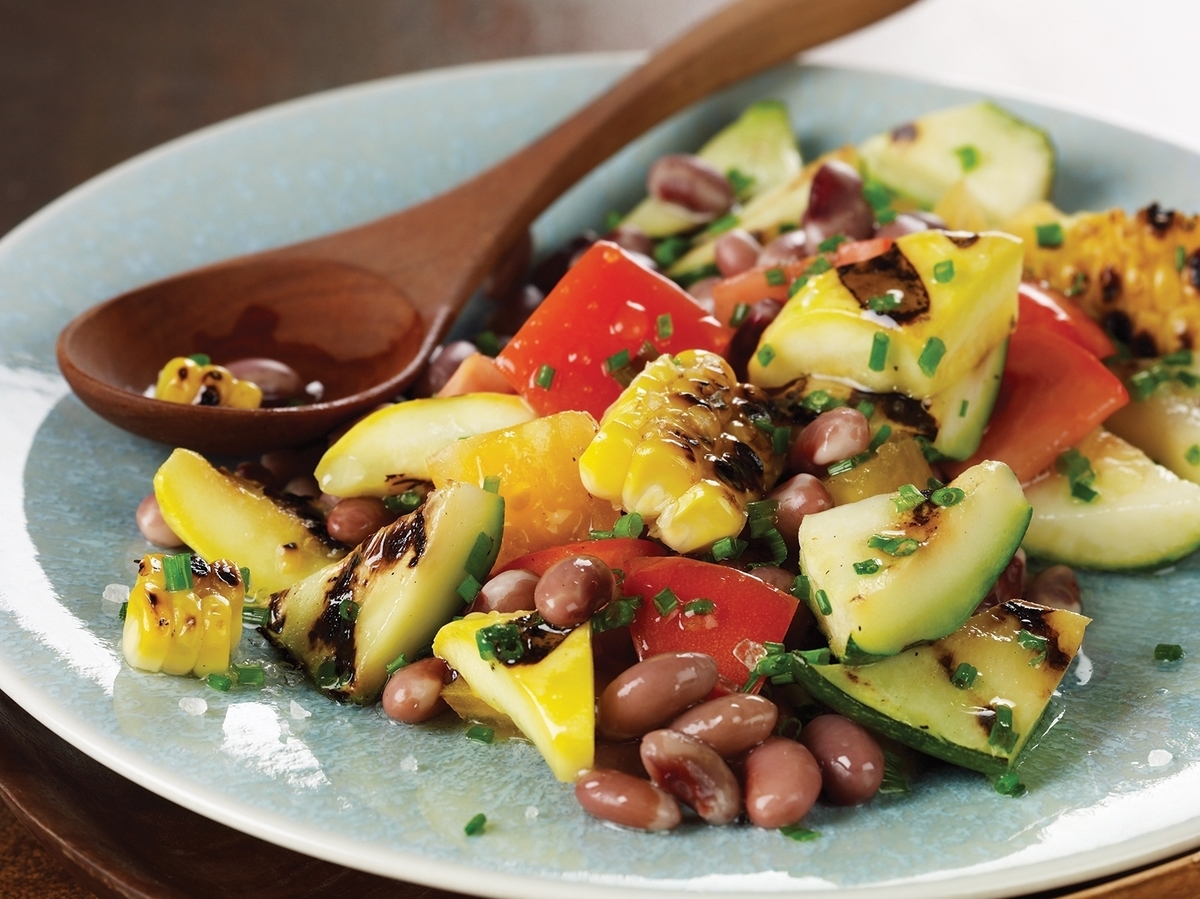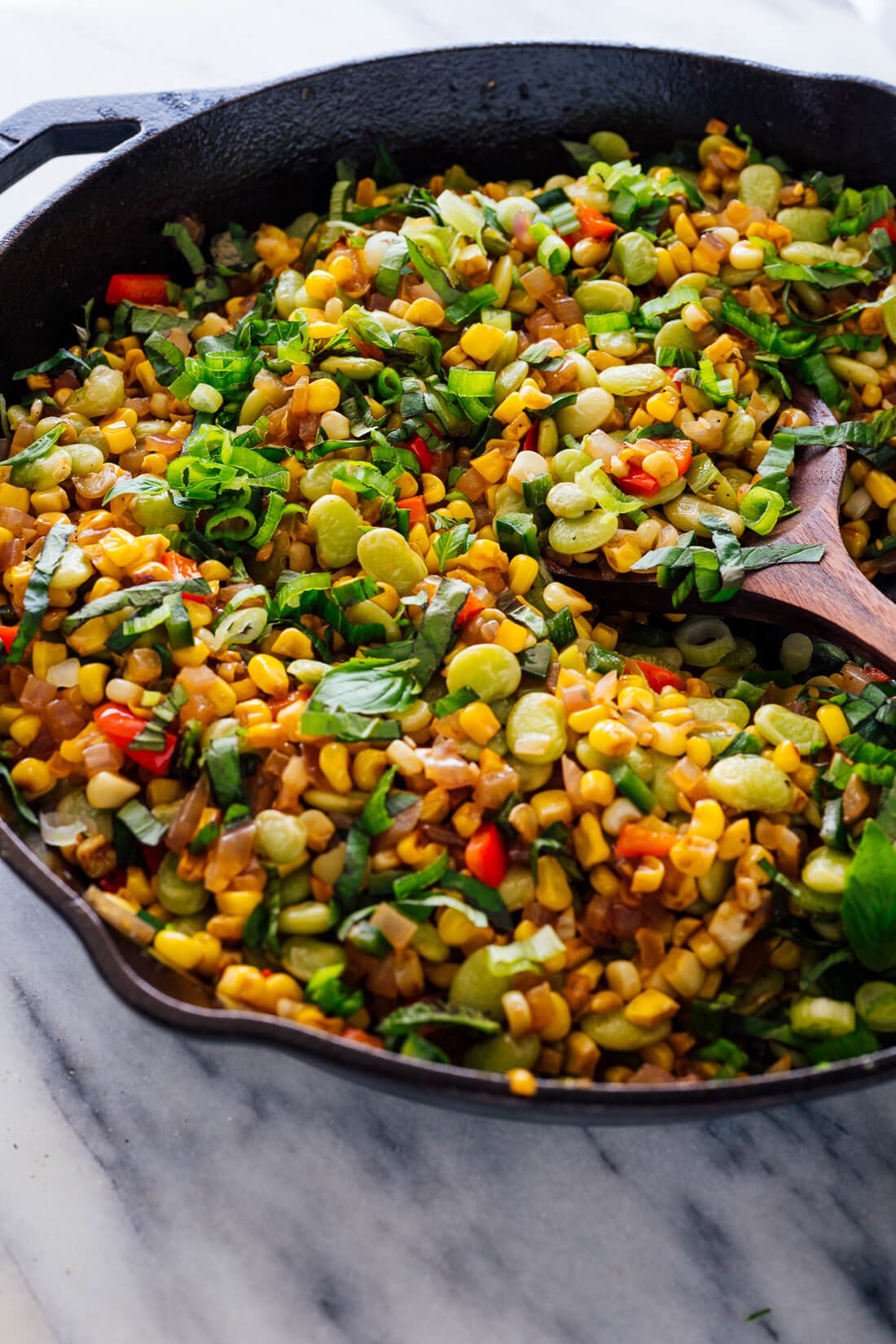
A Taste of Tradition: Exploring the Native American Corn and Bean Salad
The culinary landscape of Native American traditions is rich with history, ingenuity, and a profound connection to the earth. Among the most iconic and enduring contributions are the "Three Sisters" – corn, beans, and squash – a symbiotic agricultural system that has sustained communities for millennia. While often prepared as stews or succotash, these foundational ingredients also lend themselves beautifully to lighter, more vibrant dishes. The Native American Corn and Bean Salad, a modern interpretation rooted in ancient practices, offers a refreshing and flavorful way to experience the delicious synergy of these vital crops.
This salad is more than just a meal; it’s a celebration of heritage, a testament to sustainable living, and a delightful fusion of textures and tastes. It speaks to a time when food was a sacred gift from the land, harvested with care and prepared with reverence. By understanding the origins and significance of its components, we can appreciate the depth and beauty of this seemingly simple dish.
The Pillars of the "Three Sisters": A Foundation of Sustenance and Wisdom

The story of the Native American Corn and Bean Salad begins with the legendary "Three Sisters." This ingenious companion planting system, developed by indigenous peoples across North America, represents a sophisticated understanding of ecological balance and nutritional completeness.
-
Corn (Maize): A staple crop for countless Native American tribes, corn provided essential carbohydrates and a versatile food source. It was dried, ground into flour for bread and mush, popped, and eaten fresh. In the context of the salad, corn kernels offer a sweet burst of flavor and a satisfying chewiness. Different varieties of corn, from the sweet yellow and white of modern agriculture to the more robust blue and multi-colored heritage varieties, can add visual appeal and nuanced sweetness.
-
Beans: The nitrogen-fixing power of beans was crucial to the Three Sisters system. They replenished the soil, providing vital nutrients for the corn and squash to thrive. Beans also offered a significant source of protein, fiber, and essential minerals. In salads, various types of beans can be used, from the creamy texture of cannellini or great northern beans to the earthy flavor of black beans or pinto beans. Their versatility allows for a range of textures and tastes within the salad.
-
Squash: Providing fats, vitamins, and a range of textures, squash completed the nutritional triad. Different varieties offered different benefits, from the sweet, fleshy winter squashes to the tender summer squashes. In a salad, cooked and cooled squash, particularly varieties like butternut or acorn, can add a delightful sweetness and a tender bite. Roasted squash, with its slightly caramelized edges, brings an extra layer of complexity.

Beyond their individual nutritional contributions, the Three Sisters system was a testament to a holistic approach to agriculture. The tall stalks of corn provided a natural trellis for the climbing beans, while the sprawling vines of squash shaded the soil, retaining moisture and suppressing weeds. This symbiotic relationship ensured bountiful harvests with minimal effort and resource depletion, a philosophy that resonates strongly with modern sustainability movements.
From Ancient Fields to Modern Plates: The Evolution of the Salad
While the precise origins of a "corn and bean salad" as we know it today are difficult to pinpoint, its roots are undeniably intertwined with the traditional ways of preparing these ingredients. Historically, Native Americans would have combined cooked corn and beans in various forms, often seasoned with herbs, spices, and sometimes rendered animal fats or wild onion. The concept of a fresh, vibrant salad, however, likely evolved with increased contact and trade, incorporating new ingredients and culinary techniques.
The modern Native American Corn and Bean Salad often embraces this evolution, while still honoring the core ingredients. It’s a dish that can be adapted to seasonal availability and personal preference, showcasing the enduring appeal of these ancestral foods. The beauty of this salad lies in its adaptability. It can be a simple side dish, a light lunch, or a hearty appetizer.
Key Components and Flavor Profiles
A well-crafted Native American Corn and Bean Salad is a symphony of textures and flavors. Here are the essential elements that contribute to its deliciousness:
-
The Base: The foundation is, of course, the corn and beans. Freshly cooked corn kernels (whether from the cob, frozen, or canned – though fresh is always preferred for optimal sweetness) and a variety of cooked beans are the stars. The combination of sweet corn and earthy beans provides a delightful contrast.
-
The Vegetables: Beyond the core, a good salad benefits from a colorful array of complementary vegetables. Bell peppers, in their vibrant hues of red, yellow, and orange, add crunch and a subtle sweetness. Red onion, finely diced, provides a sharp, pungent contrast that cuts through the sweetness. Jalapeños or other chili peppers can be added for a touch of heat, reflecting the spice often found in traditional Native American cooking. Diced tomatoes, when in season, bring a juicy tang.
-
The Herbs and Aromatics: Fresh herbs are crucial for brightening the flavors. Cilantro is a popular choice, its citrusy notes pairing beautifully with corn and beans. Parsley offers a milder, herbaceous freshness. Finely chopped garlic and sometimes a hint of wild onion or chives can add depth.
-
The Dressing: The dressing is where the magic truly happens, binding all the flavors together. A simple vinaigrette is often used, but it can be elevated with indigenous ingredients or flavor profiles. A lime-based dressing provides a zesty tang that complements the sweetness of the corn. Olive oil or a neutral vegetable oil serves as the base. For a touch of complexity, a hint of cumin, chili powder, or smoked paprika can be incorporated, evoking the smoky flavors of traditional cooking. A touch of honey or maple syrup can further enhance the natural sweetness of the corn and balance the acidity of the lime.
-
Optional Additions: To further personalize the salad, consider these additions:
- Avocado: Creamy avocado adds a luxurious texture and healthy fats.
- Roasted Sweet Potatoes or Butternut Squash: These add another layer of sweetness and a tender, yielding texture.
- Toasted Pepitas (Pumpkin Seeds): These offer a satisfying crunch and a nutty flavor, connecting back to the squash component of the Three Sisters.
- Crumbled Feta or Cotija Cheese: For a salty, creamy element, though traditionally less common, these can be a delicious modern addition.
- A sprinkle of smoked paprika or chipotle powder: For an added smoky depth.
A Dish for All Seasons
The beauty of the Native American Corn and Bean Salad is its inherent versatility. While it’s a perfect dish for summer picnics and barbecues, its hearty nature also makes it suitable for cooler months. By using frozen corn and canned beans, it can be enjoyed year-round. The flavors meld and deepen as the salad sits, making it an excellent make-ahead option for gatherings.
Preserving Tradition, Embracing the Future
In a world increasingly focused on sustainable agriculture and wholesome eating, the Native American Corn and Bean Salad stands as a powerful example of time-tested wisdom. It reminds us of the importance of respecting the land, utilizing its bounty, and celebrating the interconnectedness of nature. By recreating and sharing this dish, we not only enjoy a delicious and nutritious meal but also participate in the ongoing legacy of indigenous culinary heritage. It’s a taste of tradition that nourishes the body and honors the spirit.
Native American Corn and Bean Salad Recipe
This recipe is a modern interpretation, designed to be adaptable and flavorful. Feel free to adjust seasonings and ingredients to your preference.
Yields: 6-8 servings
Prep time: 20 minutes
Cook time: 15-20 minutes (if cooking corn from fresh)
Ingredients:
For the Salad:
- 2 cups cooked corn kernels (from about 3-4 ears of fresh corn, or 1 (15 oz) can, drained, or 1.5 cups frozen corn, thawed)
- 2 (15 oz) cans mixed beans (such as black beans, kidney beans, pinto beans, cannellini beans), rinsed and drained
- 1 red bell pepper, finely diced
- 1 yellow or orange bell pepper, finely diced
- 1/2 red onion, finely diced
- 1-2 jalapeño peppers, seeded and finely minced (optional, for heat)
- 1/4 cup chopped fresh cilantro
- 1/4 cup chopped fresh parsley
- 1-2 cloves garlic, minced
For the Dressing:
- 1/4 cup fresh lime juice (from about 2-3 limes)
- 1/4 cup olive oil (or other neutral vegetable oil)
- 1 teaspoon ground cumin
- 1/2 teaspoon chili powder (or smoked paprika for a smoky flavor)
- 1/2 teaspoon salt, or to taste
- 1/4 teaspoon black pepper, or to taste
- 1-2 teaspoons honey or maple syrup (optional, to balance acidity)
Optional Additions:
- 1 ripe avocado, diced
- 1 cup cooked and diced sweet potato or butternut squash, cooled
- 1/4 cup toasted pepitas (pumpkin seeds)
- Crumbled feta or cotija cheese (for serving)
Instructions:
- Prepare the Corn (if using fresh): If using fresh corn, you can grill it, boil it, or roast it until tender. Once cooked, carefully cut the kernels off the cobs. If using canned or frozen corn, ensure it is well-drained or thawed.
- Rinse and Drain Beans: Thoroughly rinse and drain all canned beans.
- Dice Vegetables: Finely dice the red bell pepper, yellow/orange bell pepper, and red onion. If using jalapeño, remove the seeds and membranes for less heat, then mince finely.
- Chop Herbs and Mince Garlic: Chop the fresh cilantro and parsley. Mince the garlic cloves.
- Make the Dressing: In a small bowl or jar, whisk together the fresh lime juice, olive oil, ground cumin, chili powder (or smoked paprika), salt, and black pepper. If desired, stir in honey or maple syrup to balance the flavors. Taste and adjust seasonings as needed.
- Combine Salad Ingredients: In a large mixing bowl, combine the cooked corn kernels, rinsed and drained beans, diced bell peppers, diced red onion, minced jalapeño (if using), chopped cilantro, chopped parsley, and minced garlic.
- Dress the Salad: Pour the prepared dressing over the salad ingredients. Toss gently to ensure everything is evenly coated.
- Add Optional Ingredients (if using): If adding avocado, sweet potato/squash, or pepitas, gently fold them into the salad now.
- Chill and Serve: For the best flavor, cover the salad and refrigerate for at least 30 minutes to allow the flavors to meld.
- Serve: Serve chilled. Garnish with optional crumbled cheese if desired.
Tips for Success:
- Freshness is Key: Using fresh corn and fresh herbs will significantly enhance the flavor of your salad.
- Variety of Beans: Don’t be afraid to mix and match different types of beans for a more complex texture and flavor.
- Spice Level: Adjust the amount of jalapeño to your personal preference for heat. You can also add a pinch of cayenne pepper for extra kick.
- Make Ahead: This salad is excellent made a few hours in advance, as the flavors deepen over time. However, if adding avocado, it’s best to add it just before serving to prevent browning.
- Grilling Corn: Grilling the corn before cutting off the kernels adds a wonderful smoky char that complements the other ingredients beautifully.
Enjoy this vibrant and flavorful salad, a delicious homage to the enduring legacy of Native American cuisine!


